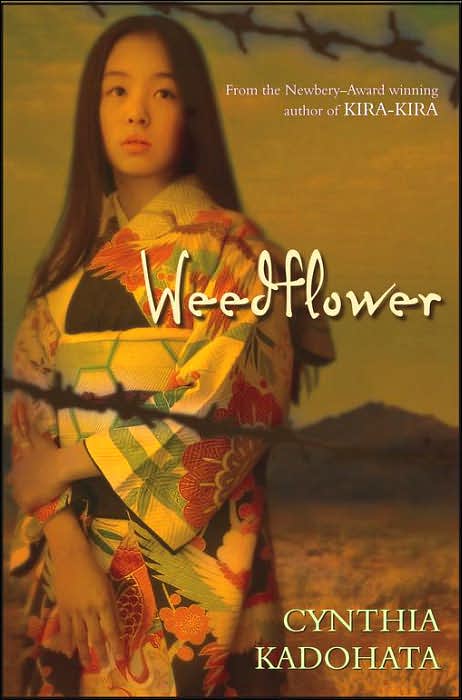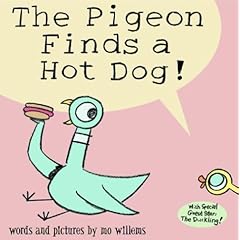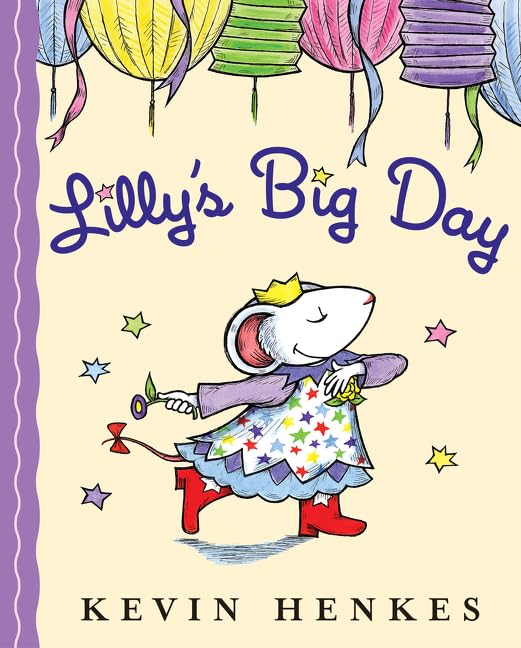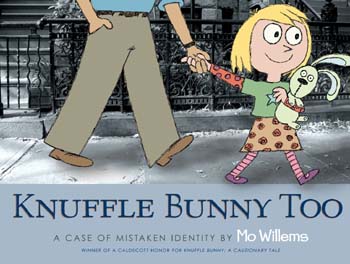
Title: Weed flower
Author: Kadohata, Cynthia
Publisher and Date: Atheneum Books for Young Readers, 2006
Genre: Historical Fiction, Multicultural
Age Range: 4th-6th
Jane Adams Award
PART 1
Lonliness???Loneliness to me can mean two things. It can mean literally having no one to talk to, play with, share things with, or even just be with. It can also mean feeling alone in the midst of having those things. It can be feeling like no one notices you, cares about you, or accepts you for who you are. Either way, loneliness is an uncomfortable, sad feeling.
What are some of your best memories? How do you hold onto them?When I think back upon my happiest memories, I think of family and friends. I think of Christmas and Santa Claus, picnics at Crowder’s Mountain, lazy days reading on the porch swing, adopting my first cat, and my surprise sixteenth birthday party with my best friends. I hold onto these things by taking time to remember them, looking at pictures, retelling old stories, watching home videos, or just by experiencing something in my day to day life that reminds me of them.
Pre-Weedflower:I learned so much from looking at these websites. I had always had a vague notion of what happened to the Japanese people during WWII but I never had taken an in-depth look at their side of the story. Most of these people were American born citizens who were uprooted from their lives and told that they were now enemies. The pictures from the
San Francisco Evacuation presentation project broke my heart. These were our people who were forced to into relocation. Another thing that struck me is that life after the war wasn’t that much better for the Japanese Americans. The
“Japanese Internment Camps and Their Effects” website specifically talked about how some could not move back into their old homes, they had trouble finding jobs, they were still shunned, and some did not ever recover form the trauma of it at all! What a big price we pay for racism!
ch.1-15What a sad story! But at the same time what a powerful message it contains! Sumiko is the kind of character who can really make this awful situation come alive for kids. She and her family are so lovable. She loves her family, every member, and she has such a passion for their family flower business. She is not your typical child; she works hard and studies hard. I cannot imagine taking on all the responsibilities she performs as a child. She is in charge of grading the flowers, cooking, cleaning, and heating the bathwater! Tak- Tak and Jiichan are probably my two other favorite characters from the book so far. Tak-Tak is just adorable! His love of “Baba, crickets, goo and bad smells” immediately endeared him to me. He is what I would imagine a typical younger brother to be like, curious about life and protective of his older sister. Jiichan is what I would imagine any good grandfather to be like. He loves Sumiko so much; he tries to teach her the ways of their people and pass on his entire rich cultural heritage to her. Can’t you just imagine the good stories he could tell! With each line of the story you just become closer to Sumiko and her family. You grow so close to Sumiko’s character that when she is being ripped from her family, friends, and home you feel as if it’s happening to you as well.
Parts of this book made me laugh out loud! Especially when Jiichan talks to others through the outhouse doors! This is one of my favorite parts of the book so far; Bull is trying to cheer Sumiko up after her bad party experience: “She followed his gaze and saw Uncle standing in the moonlight near the outhouse, talking to it and occasionally gesturing with his arms. Whenever Sumiko saw someone talking to the outhouse, she always knew exactly where Jiichan was.” Kids will absolutely love this part of the book! Parts of the books also made me very sad. The birthday party chapter especially. I cannot imagine inviting a child to a party and then telling a CHILD that she cannot really attend because of her skin color. This is just one example of the cruelty the Japanese people were facing at this time. I was also very upset when her Uncle and Jiichan were taken away without much of a goodbye. I cannot imagine being separated from my dad, not knowing where he was going or whether or not I would ever see him again. Emotions run high in this book; I think children can appreciate that. Children always seem to sense when something is wrong even before adults do. As a teacher I would ask kids to respond to both of these situations in a journal entry. I would encourage them to talk about how they would feel if something like this happened to them.
One thing that I noticed that I found very odd was that the Japanese Americans and the Native Americans did not get along too well. I guess I expected that both could empathize with the other. They definitely did the opposite however; the Native American boys were spying on the Japanese Americans claiming that all Japanese were farmers and wasteful (pg. 121-122) and complaining that they needed to get off their land, and the Japanese American girl warned Sumiko that the Native American boys were scalpers who would also cut off their fingers to boil (pg.122). I think this is very interesting; even in the mist of experiencing racism and prejudices both groups lashed out with racism and prejudice toward each other!
There is so much more of this book to go. I cannot wait to see if Sumiko befriends the Indian boys, if their family is finally reunited, or if they reach “ultimate boredom” as Jiichan calls it. Ill guess I’ll just have to keep reading and find out!
PART 2
ch.16-33
The second half of Weedflower just flew by for me! I could not seem to put it down. One of my favorite parts early in the second half is when Jiichan sends Sumiko paper to write him a letter on. Her uncle writes, “Oh and Jiichan says to send you the enclosed blank sheet of paper. He says there must be a paper shortage in Poston, since you are using old newspapers to write on. He says I wonder where your Aunt is getting the blank paper that she writes to us on.” (pg.137) I just love this part of the book because it gives the reader a chance to laugh in such a sad book.
The Japanese gardens touched my heart. I love how Sumiko took such great care of her garden and worked so hard to get it to flourish in the middle of the desert. I think the gardens that the Japanese Americans built represent the Japanese people well. They were forced into the desert against their will yet they found ways to survive and flourish in a place where most of us would think it impossible. They worked hard and against the odds to make a place that was not even their permanent home beautiful. The line on page 235 sums this up well, "Together the Japanese had made the desert bloom." The Japanese Americans persevered and survived. This is a lesson that children and adults alike should take to heart.
One of my favorite parts in the second half of Weedflower is the relationship that forms between Sumiko and Frank. They remind me so much of Vera and Alfred in the Aleutian Sparrow. They are such unlikely friends and yet they are the best kind of friend to one another. You can tell that both of them really care about the other. Sumiko takes an extra cup of ice every time she goes out into the bean field just in case she sees Frank. Frank talks about Sumiko to his brother calling her pretty and giving her the nickname “Weedflower.” And at the end of the story Frank urges Sumiko to leave the camp because he knows that it is what is best for her. I was inwardly torn during this part. It is so hard to give a friend or a loved one up; I do not know if I would have the same courage that Frank had to tell her to go. One of the most powerful parts of the book is when Frank tells Sumiko that his brother has been killed in battle in the Pacific. Sumiko and Frank both realize that Japanese soldiers killed his brother, and Sumiko feels so guilty for this. This is just an unbelievably sad part of the book. No child should have to bear this kind of burden.
The relationship between Sumiko and Tak-Tak was also very touching. Sumiko and Tak-Tak’s relationship reminded me so much of the relationship Bo and Prosper had in The Thief Lord. Sumiko loves her brother so much and does her very best to take care of him. She always tucks him every night and removes his glasses for him to make him as comfortable as he can be.
The ending of the book slightly disappointed me; I was left craving more. What happened to Sumiko? Did she eventually get to open up her flower shop? Did the family ever get reunited? Did Bull and Ichiro make it back safely form war? This are questions that I really wanted answer to!
All in all, I would definitely use this book in my classroom. This story provides such a stark example of racism and prejudice in our great nation’s history. It gives us such an immense opportunity to discuss this with our students. Sumiko and Frank give us such a real example to build on; what if we all were as brave as Sumiko and fought for our friends and for those other people consider inferior or different. I loved it when Sumiko stood up for Frank when the other children were literally beating him because he was different. This same scenario has happened to various groups of people from the Jews, the Aleutians, and the Japanese. We need to make our students understand that these are real people whose lives were dramatically changed. None of these people did anything wrong or in any way deserved this; they simply dealt with the prejudices of their times.
Racism is such a real thing and it still exists today. Anytime that you hear a comment or joke being made about someone’s looks or heritage, that is racism in action. As future teachers we need to take the initiative to stop this kind of thing from happening in our own lives; anytime we hear a relative, friend, or even a stranger make a racist comment we need to call them out on it. People are people, regardless of their skin color, eye color, height, or age. We all share common emotions, thoughts, and experiences that bind us together. We all experience love, death, and even birthdays, we need to start focusing on what we have in common rather than we do not. This applies to our future classrooms as well. If we don’t make the everyday change in our lives and in our classrooms, than how can we expect to make a global change? And if we don’t make a global change, if we don’t stand up for others and put a stop to this senseless judging of others, than who knows what’s next.
check out these websites:http://library.thinkquest.org/TQ0312008/http://americanhistory.si.edu/perfectunion/experience/index.htmlhttp://www.sfmuseum.org/hist8/ppoint.htmlhttp://pbskids.org/wayback/fair/fighters/fighters_01_1.htmlhttp://memory.loc.gov/learn/lessons/99/fear/intro.htmlhttp://teachers.henrico.k12.va.us/specialist/franceslively/lessons/grade6/bracelet6.htmhttp://www.leeandlow.com/teachers/guide1.htmlhttp://www.pbs.org/wgbh/amex/eyesontheprize/tguide/elem.htmlhttp://www.kimskorner4teachertalk.com/readingliterature/genres/historical/baseball_saved_us.htmhttp://www.pbs.org/childofcamp/index.htmlhttp://home.igc.org/~japa/index.htmlhttp://www.passingposton.com/
Curicular Connections:










